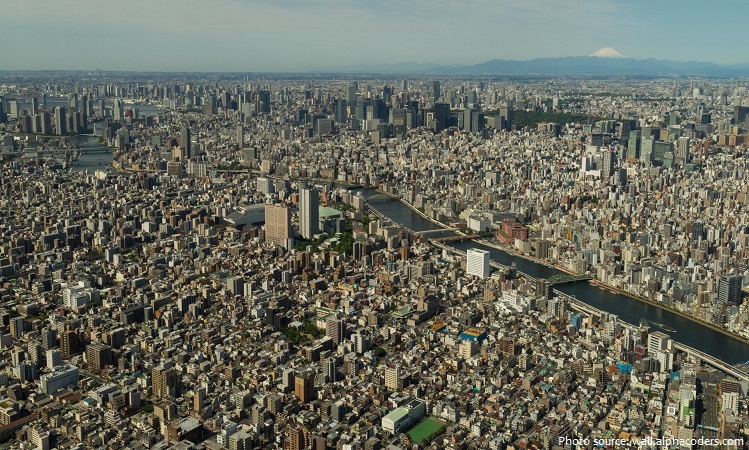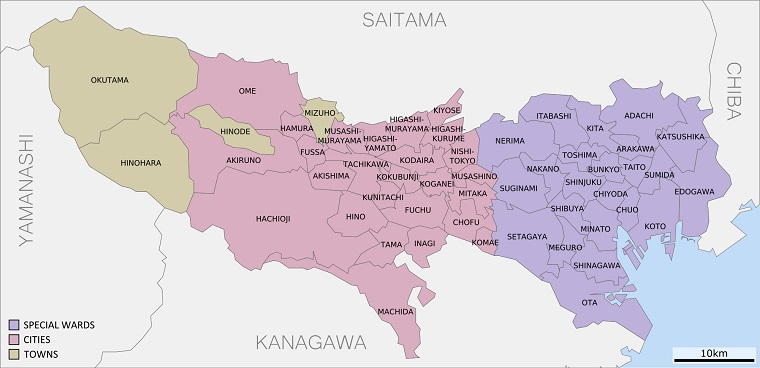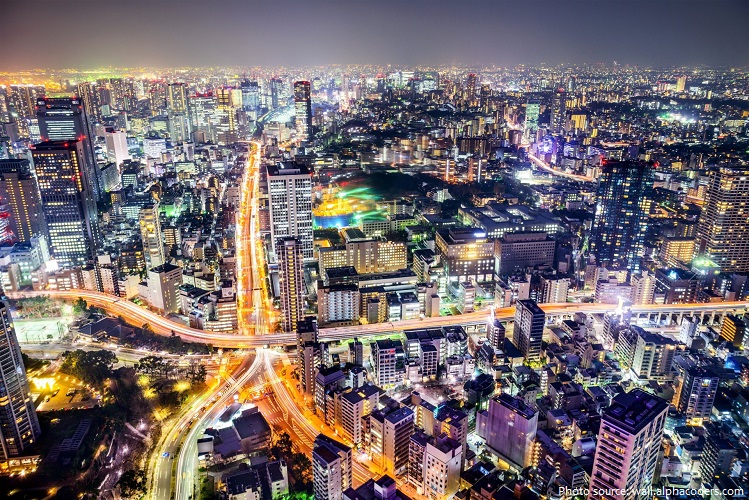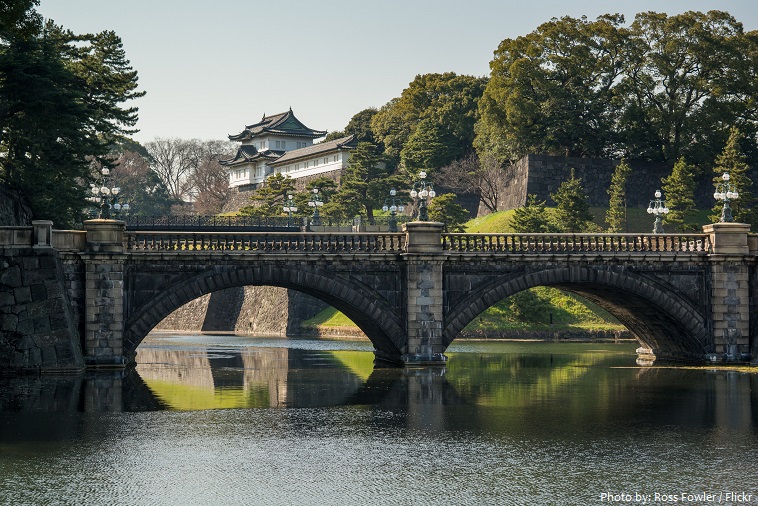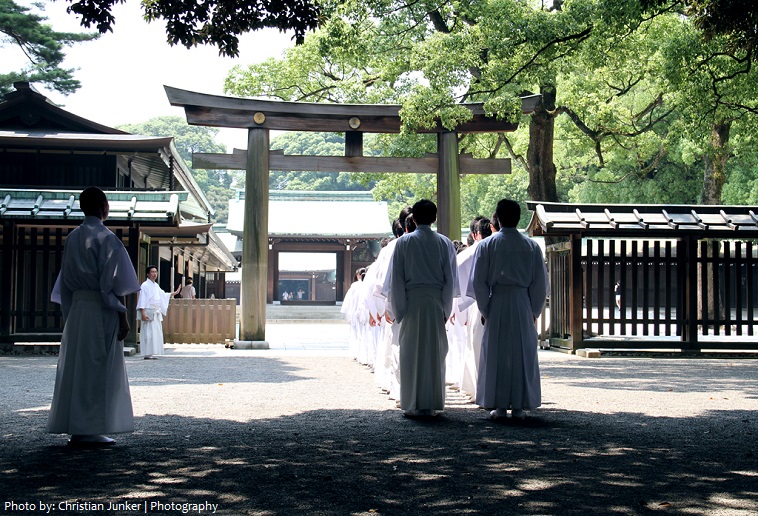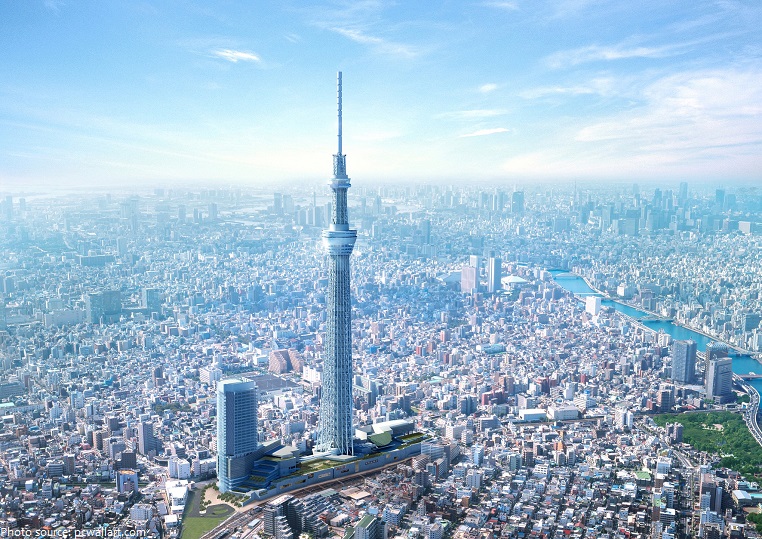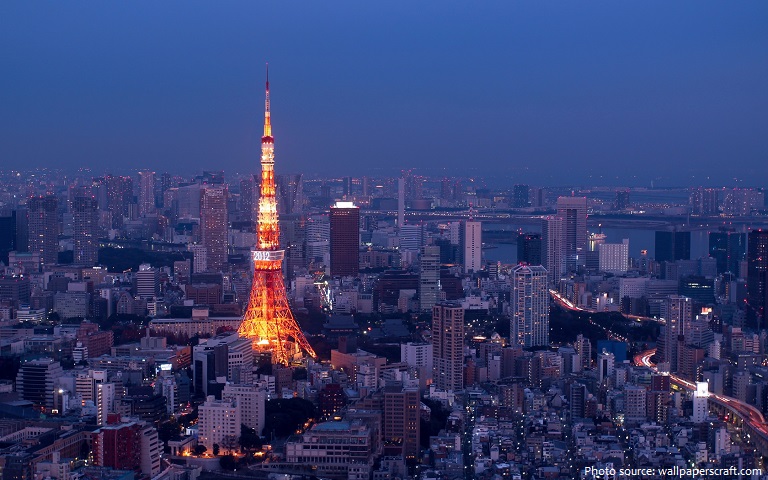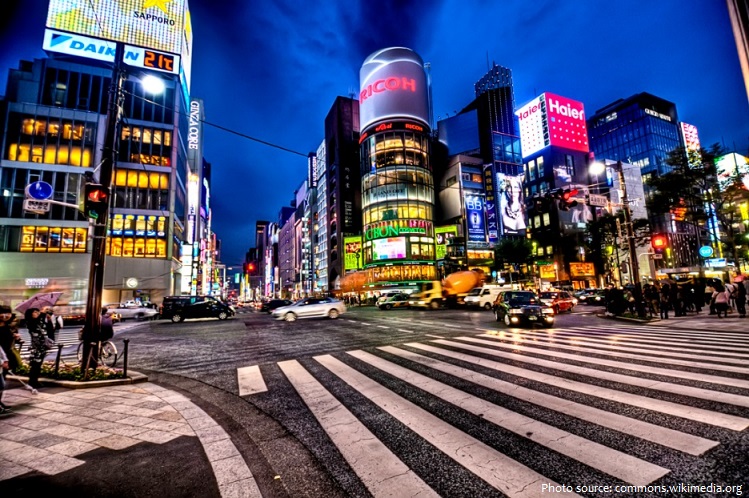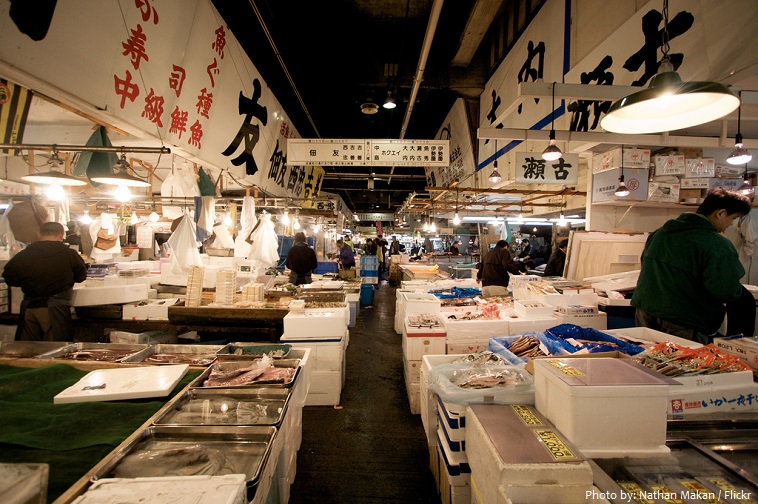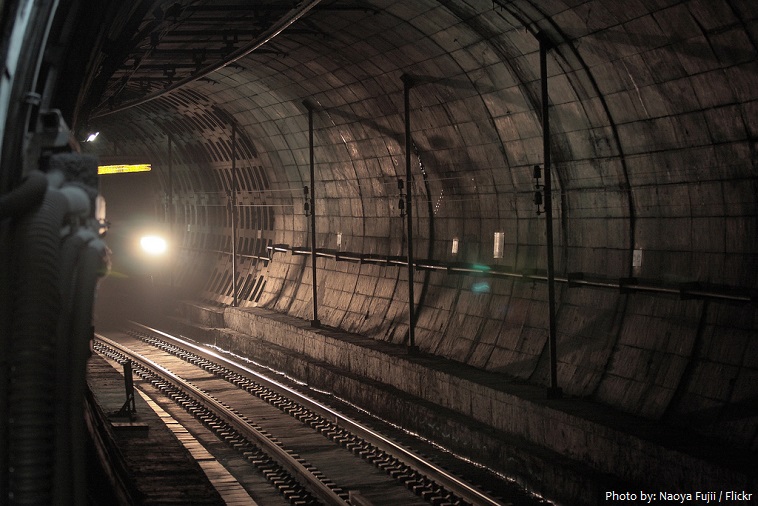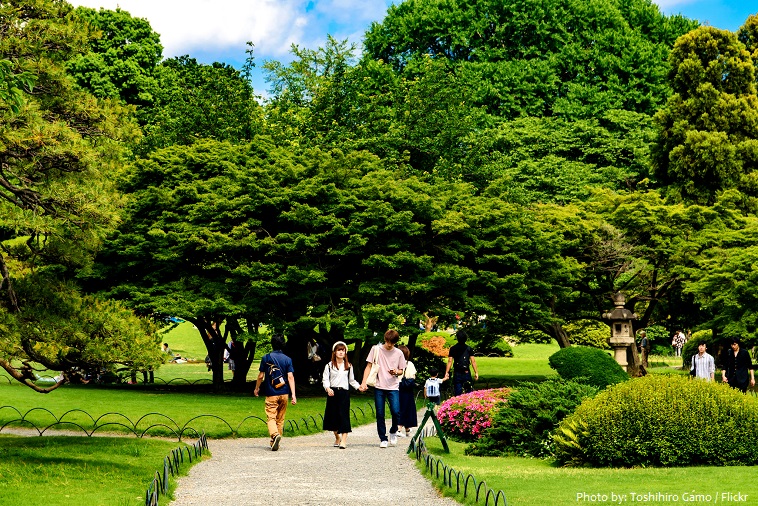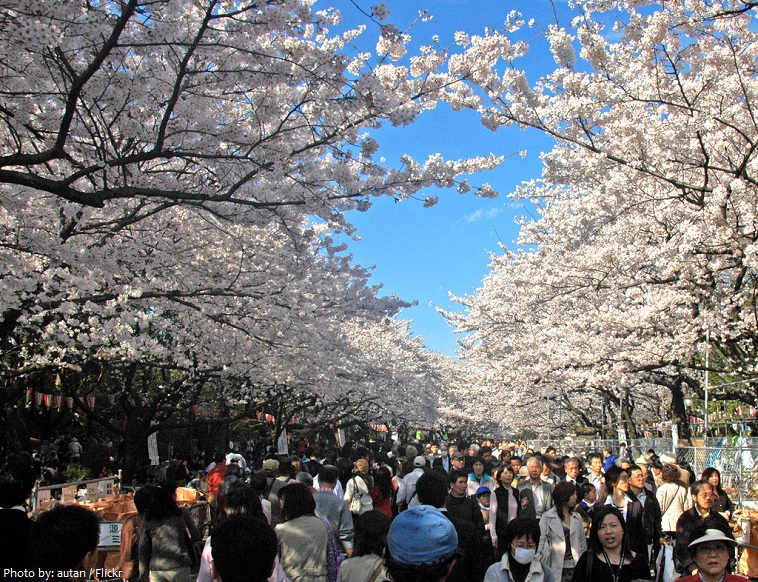Tokyo, officially Tokyo Metropolis, is the capital and most populous city in Japan.
The city is located in the southern Kanto region, positioned in approximately the center of the Japanese archipelago.
As of January 2017, the population of Tokyo is 13.65 million people.
The Greater Tokyo Area is the most populous metropolitan area in the world with 38,305,000 people in 2018.
Tokyo covers an area of 2,188 square kilometers (845 square miles).
The mainland portion of Tokyo lies northwest of Tokyo Bay and measures about 90 km (56 mi) east to west and 25 km (16 mi) north to south.
The average elevation in Tokyo is 40 meters (131 feet).
Also within the administrative boundaries of Tokyo Metropolis are two island chains in the Pacific Ocean directly south: the Izu Islands, and the Ogasawara Islands, which stretch more than 1,000 kilometers (620 mi) away from the mainland.
Tokyo is a metropolitan prefecture comprising administrative entities of special wards and municipalities. The “central” area is divided into 23 special wards, and the Tama area is made of 26 cities, five towns, and eight villages.
Tokyo was originally a small fishing village named Edo. Edo was first fortified by the Edo clan, in the late twelfth century. In 1457, Ōta Dōkan built Edo Castle.
Edo started to flourish after Tokugawa Ieyasu established the Tokugawa Shogunate here in 1603.
As the center of politics and culture in Japan, Edo grew into a huge city with a population of over a million by the mid-eighteenth century.
In 1869, the 17-year-old Emperor Meiji moved to Edo, and in accordance the city was renamed Tokyo (meaning Eastern Capital).
One of the world’s most modern cities in terms of its infrastructure and design – due largely to the 1923 earthquake and the devastation of World War II.
Tokyo is a marvelous mix of modern living and old-fashioned manners, slick high-tech gadgets and cutesy cartoon mascots. It’s terribly crowded, yet can be strangely quiet.
The cultural side of Tokyo is famous for its numerous museums, theaters, festivals, internationally noted cuisine, and professional sports clubs, including baseball, football, along with traditional Japanese pursuits like Sumo Wrestling.
Japan is home to thousands of temples, but the oldest of them all is the Sensō-ji Temple in Tokyo. Dedicated to Kannon, the Buddhist goddess of compassion, the temple’s history dates back to the year 645, making it over 1,400 years old. During the Second World War, much of the temple was destroyed, but it was rebuilt afterwards in the original style. This makes Sensō-ji Temple a reminder of the resiliency of the Japanese people and an example of new beginnings.
One of the main attraction in Tokyo is the Imperial Palace, the primary residence of the Emperor of Japan. It is a large park-like area located in the Chiyoda ward of Tokyo and contains buildings including the main palace, the private residences of the Imperial Family, an archive, museums and administrative offices. Many of the outer gardens are open and free to the public, allowing you to stroll through green parks, admiring the water-filled moat and cherry trees all around you.
Dedicated to Emperor Meiji and his wife, Empress Shōken, construction of the splendid Meiji Shrine began in 1915 and was completed in 1926. Although the original structure was destroyed during WWII, it was rebuilt in 1958 and remains one of Tokyo’s most important religious sites. Meiji Shrine is located in a forest that covers an area of 70 hectares (170 acres).
Tokyo Skytree is a broadcasting, restaurant, and observation tower in Sumida, Tokyo. Standing 634 meters (2,080 feet) tall, the Tokyo SkyTree is the tallest structure in Japan. It is also the tallest tower in the world and the second tallest structure in the world after the Burj Khalifa (829.8 m/2,722 ft).
Tokyo Tower is a communications and observation tower in Tokyo. At 332.9 meters (1,092 feet), it is the second-tallest structure in Japan. Looking to the Western world for inspiration, architect Tachū Naitō based his design on the Eiffel Tower in Paris, France.
Ginza is Tokyo’s busiest shopping area and is as iconic as Times Square in New York, and much older: it’s been the commercial center of the country for centuries, and is where five ancient roads connecting Japan’s major cities all met. Lined by exclusive shops and imposing palatial stores, the Ginza district is also fun to simply wander around or, better still, sit in one of its many tea and coffee shops or restaurants while watching the world rush past.
The Tsukiji Market is the world’s largest, busiest fish market. The market handles more than 400 different types of seafood from cheap seaweed to the most expensive caviar, and from tiny sardines to 300 kg tuna and controversial whale species.It has long been a favorite destination for jet-lagged tourists with predawn hours to fill. But the main reason for going at 5 a.m. is to catch the live tuna auctions.
First opened in 1927 and greatly expanded in preparation for the 1963 Summer Olympics, Tokyo’s mass transit system, only part of which runs underground, is the busiest in the world, ferrying more than 8.7 million commuters a day–and more than 3.2 billion annually–along its 320 kilometers (200 miles) of tracks.
For such a crowded and heavily built-up city, Tokyo boasts a surprising number of parks, many of them quite beautiful. There are over 6,000 different parks and gardens covering more than 1,000 hectares (2,471 acres) in the city.
Cherry blossom is Japan’s national flower and symbolizes the arrival of spring and the beginning of the new school and financial year. The cherry blossom of Tokyo’s trees is a truly spectacular sight and one of the best places to experience the full impact is at Ueno Park where there are over one thousand trees.
Six 15-day Grand Sumo tournaments are held each year in Japan. Most take place in Tokyo, with one held in January, another in May, and a third in September, while Fukuoka, Osaka, and Nagoya each host one tournament as well, in November, March, and July, respectively.
The primary thing you see about Tokyo is that there is no vandalism. It is one of the safest cities in the world.
Tokyo is one of the most densely populated cities in the world.
Tokyo is also one of the world’s most expensive cities.
Some of the best things you can buy from vending machines in Tokyo. They are on nearly every block in Tokyo — down alleyways, in front of convenience stores, in areas both residential and commercial.
There are hundreds of Sushi restaurants with various price ranges in Tokyo and 22 of them have received Michelin stars.
Possibly the busiest intersection in the world (and definitely in Japan), Shibuya Crossing, is like a giant beating heart, sending people in all directions with every pulsing light change. Perhaps nowhere else says ‘Welcome to Tokyo’ better than this. Hundreds of people – and at peak times said to be over 1000 people – cross at a time, coming from all directions at once yet still managing to dodge each other with a practised, nonchalant agility.
Tokyo has more neon signs than any other city in the world. A trademark image in Tokyo is entire streets full of neon lights!
Tokyo Disneyland was Disney’s first park outside the US.
On September 7, 2013, the IOC selected Tokyo to host the 2020 Summer Olympics. Tokyo will be the first Asian city to host the Olympic Games twice.
Tokyo is the city with the most millionaires in the world but London has the most multi-millionaires and New York the most billionaires.

